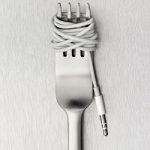White gold and silver are extremely popular metals in the jewelry world. But in order to maintain beauty and durability, jewelry made with these metals must be plated with rhodium. Rhodium is extremely brittle, so jewelry usually needs to be re-plated every year or so, depending on wear.
Needless to say, if you want to be designing, repairing, or selling this type of jewelry, you need to be proficient at electroplating rhodium. It’s a skill that takes practice and experience – so to help our jeweler clientele, we created this infographic of tips for getting the best results when rhodium plating jewelry.
In talking with other jewelers about the subject, one key to success was clear: contamination must be prevented at all costs to ensure a thorough and spot-free plating. Make sure the jewelry is thoroughly cleaned of organic contaminants to prevent spotting, and sterilize your equipment to remove metallic contaminants and ensure an even plating.
The shape of the jewelry also plays a role in consistent plating. Did you know that leaving a fork in the microwave will create dangerous sparks, but a spoon won’t? That’s because the prongs of the fork are high-current density zones, so they give off sparks. Since a spoon has a softer shape, the currents from the microwave don’t have any points to condense into – so no sparks are created. If you’re plating jewelry with many points or sharp edges, the same principles apply, so you may need to adjust the voltage of your plating kit accordingly.
The infographic has even more tips. If you have additional advice, feel free to share it on our Facebook or Twitter.












